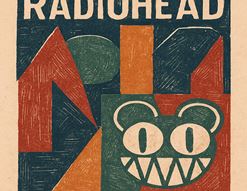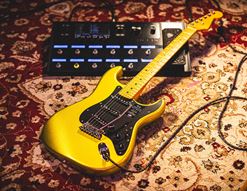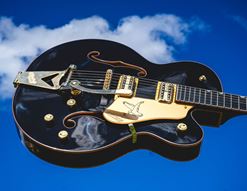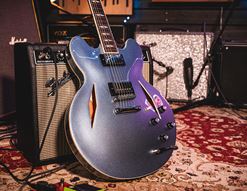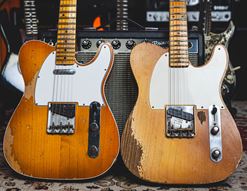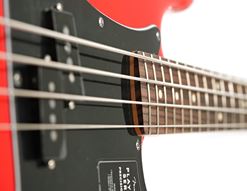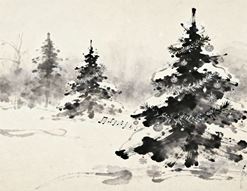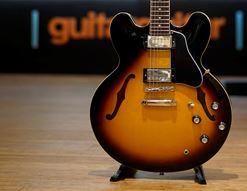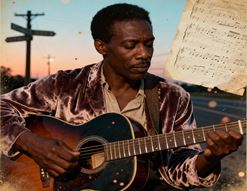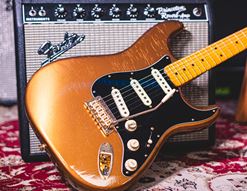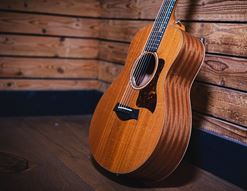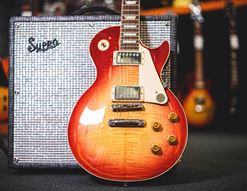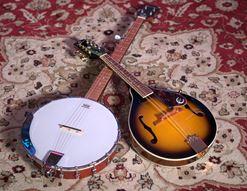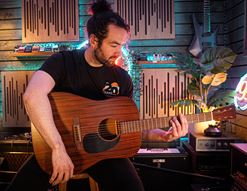How familiar are you with Country? It’s huge over here now, bigger than ever, and one of the most guitar-centric musical styles around. And, like most musical genres, it quickly gets complicated…
Country music is one of those genres that - upon general inspection - seems to be quite a straightforward collection of attributes, at least until you look slightly closer in. Once you get past what’s currently happening in Nashville, you start to notice that there are all kinds of tributaries flowing out from the mainstream, representing stylistic variations, geographical differences and cultural factors.
Whilst cowboy hats and storytelling are still large elements, there’s now a lot more inclusion and diversity within what we’d largely call ‘country music’. Today, I’ll walk you through some of these subgenres, highlighting some key figures and defining features of each. It won’t be exhaustive (that would be impossible!), but it will hopefully be a handy reference for you, and a starting point for subsequent exploration.
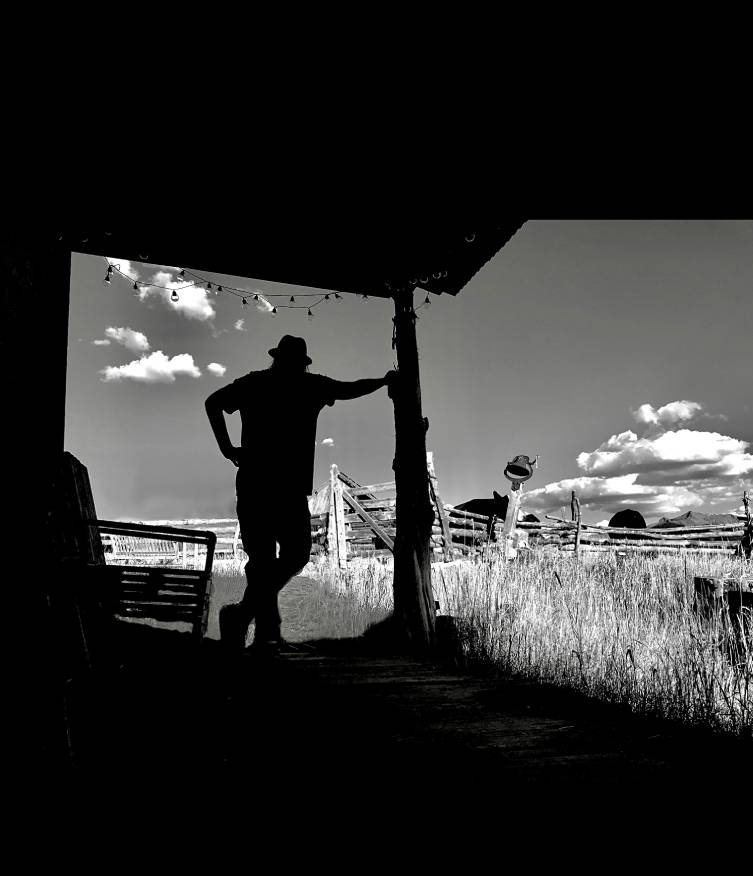
(Photo: DH Lovelife)
Is Country Itself a Subgenre?
Before delving into the myriad of Country subgenres, it seems sensible to take a second and consider the Country music genre at large. Is it a subgenre itself? You could certainly say so, since it comes from a directly traceable line that travels back to folk music, and folk from the Appalachian mountains in particular. Is country a subgenre of folk that has become far larger than the source it sprang from?
Appalachian folk was actually a melange of styles brought by American immigrants from their home countries of Scotland, Ireland, West Africa and more. It was a melting pot of traditional songs mixed with elements from the songs of other countries and cultures. This natural blending of styles and instrumentation became (in many cases) what we know as old-school country music.
So, you can see it as a subgenre of folk, but I’d say it has more than established itself as a legitimate universe of music in itself, that takes pieces from across all of music but synthesizes it into its own cultural aesthetics. In other words, it’s easier to say what IS country music than what isn’t.
Now, you don’t need cowboy boots and a flannel shirt for this, but I guarantee you it’ll help! Let’s get into this adventure, and see what we can see…

(Photo: Trevor Pavlik)
Country Subgenres at a Glance
Nashville or 'The Nashville Sound'
Nashville or 'The Nashville Sound'
Nashville country is the super-produced, ultra slick, mainstream face of country music. This is where there’s definitely something of a (winning) formula to how the songs are written, orchestrated and produced, and also how they are then presented.
The Nashville Sound started in the 50s, as a sort of subgenre that removed the more ‘Honkey Tonk’ elements of the music in favour of much smoother and shinier music complete with big choruses, string sections and more pop-friendly arrangements. This is what most mainstream Country adheres to nowadays, but in a more contemporary manner. In fact, it’s basically what most people think of as ‘Country Music’ and it incorporates Dolly Parton as much as it does Zach Bryan. Alternative Country is alternative to this, basically.
New Nashville
New Nashville is really just a way of separating generations of Nashville stars. There have been many decades of the Nashville ‘machine’, after all, producing an almost conveyor belt of hits with the Country stars of the day. You’ll see another entry in today’s blog for 90s Nashville below, since that was the particularly fertile ‘Garth Brooks era’, but it’s all just slick Nashville Country music: well produced, well written, but perhaps guilty of being safe and predictable at times.
Current trends outside of Country are sometimes incorporated into Nashville country, though it’s in a very ‘somewhat’, adjacent manner, if you get me. You will hear autotune on the voices, and the odd synth sound in the background, but nobody will be rapping or having breakdowns in their tunes if it’s Nashville Country! There are other country subgenres for that, though, so read on!
Brad Paisley is a good ‘face’ of New Nashville from a guitar player’s point of view, and other top stars from the New Nashville scene include Luke Combs, Ashley McBride, Lainey Wilson and Cody Johnson. Each of these artists exemplifies the ethos of Nashville: pick the best songs from the best songwriters, record them to a highly polished standard with the best musicians, and deliver them out into the world as professional products.
90s Nashville
I suppose this music is just Nashville Country too, but there are so many Country stars around today (we simultaneously live in the present and the past when it comes to music, of course) that I feel it’s worth giving the huge 90s mainstream scene its own entry here. The same slick songwriting machine ethic applies here, but this time it would be enormo-stars like Garth Brooks and Tim McGraw that would be attached to the tunes.
Leann Rimes is a great example of a cross-over star from the 90s, both of whom I’ve also mentioned in Country Pop, since it’s clear there are both! Mainstream music fans know these artists, and reliably think of them as ‘Country’, but not to the point of them being ghetto-ised in flannel and cowboy hats.
Outlaw Country
Outlaw Country began as a response to the overtly sanitised and polished music coming out of Nashville in the 70s. Seeing increasing restrictions on their creativity, certain artists rebelled by forming a breakaway movement of ‘anti-establishment’ country music, for want of a better expression. Whether they were performers who wanted to write their own material, or writers who wanted to perform theirs, the idea behind Outlaw Country was that you were the complete package, standing on your own against the Nashville processing line.
Willie Nelson, Kris Kristofferson and Waylon Jennings are generally thought of as the touchstones here, their styles distinct but alike with a certain hardness in the sound that had been lost on the more manicured ‘Chet Atkins-style’ country of the time. The focus on performers writing their own material instead of just signing or playing somebody else’s songs mean that Outlaw music had and has a particular sincerity and authenticity.
Alternative Country
Alternative Country has kind of always been around - certainly since the Outlaw Country days and perhaps before too, back to the Woody Guthrie days - as a sort of rawer, more rock n roll take on the Country vibe. It’s a loose term for sure, and includes artists who could otherwise be rock bands or even pop acts.
What fuses them to the Alternative County tag is a certain aesthetic and musical ‘glue’ of traditional songwriting and use of acoustic/traditional instruments in addition to crunchier guitars and louder drums.
Examples of Alternative artists will be pretty diverse, given how wide the subgenre is, but defining acts in my opinion would include Uncle Tupelo, Whiskeytown (and their frontman, Ryan Adams’ solo career) and the Drive-By Truckers, whose guitarist Jason Isbell has risen to great acclaim with his own solo career.
Americana
In many ways, Americana and Alternative Country can be interchangeable terms. Americana seems to be a term that certain artists and fans are more comfortable with, perhaps due to its connotations of being more ‘Country-adjecent’ than right on the money in terms of genre.
Indeed, singer-songwriters who would fit in many genres are often labelled ‘Americana’ - even if they aren’t American themselves - due to their songs being dressed up with certain Country conventions like fiddles or a steel guitar part. Wilco and Steve Earle are perhaps good indicators of Americana, as much as The Handsome Family or Lucinda Williams.
Bluegrass
Bluegrass is a genre from the 40s that emerged from Appalachian folk. It has morphed into a few sub-subgenres since, which depend more on geographical location and historical time than anything else (‘Old Time Bluegrass’ and Appalachian Bluegrass, for example), but certain stylistics remain.
Bluegrass is a very string-driven style which incorporates guitars, fiddles, banjo and mandolin. It’s a highly rhythmic music, with a strong emphasis on the off-beat. This makes Bluegrass great music for dancing to, particularly as these instruments are played as much for their percussive properties as for their harmonic. The other big part of Bluegrass is the multi-part vocal harmonies, which often use modal scales for their notes, which again marks out the sound from other Country styles.
Top Bluegrass artists include Bill Monroe and the Blue Grass Boys (genre originators) and Earl Scruggs. For modern Bluegrass, check out the Punch Brothers and Billy Strings, along with Alison Krauss, whose sound checks in with a number of Bluegrass-friendly styles.
Country Pop
Country is effectively a pop genre anyway, so this category exists for the types of music which sit so closely to mainstream pop that it’s sometimes barely describable as ‘Country’. In the 90s, this would absolutely have meant Shania Twain and LeeAnn Rimes: today you’d look towards Taylor Swift or Carrie Underwood for country-tinged pop.
Cowpunk
Cowpunk is a term used to describe music that takes the visual trappings of Country - and the sound, to a certain extent - and blends that in with Rockabilly and punk music. There is already a certain cultural sharing between these genres in terms of both fashion and subject matter, so it’s really a matter of adding a crunchier sound and a more ‘punk’ attitude.
For some great Cowpunk bands, start with Reverend HortonHeat, The Gun Club, The Dead Milkmen and The Blasters.
Country Rock
Country Rock is another of those relatively wide terms that could encapsulate Alternative Country and/or Southern Rock acts like The Allman Brothers and Lynyrd Skynyrd. The Band would also fit into this brief too, as would most of the Laurel Canyon scene (The Eagles, Jackson Browne, The Byrds, Buffalo Springfield, CSN etc) when you think about it.
More modern examples of Country Rock - as wide-ranging as the rest of these subgenres! - might include The Chicks, Sheryl Crow and Chris Stapleton.
Canadian Country
Canadian Country is another subgenre that has stemmed from Appalachian Folk and developed in its own way, far from those hills. Immigrants to Canada brought their music with them, just as they did further south, and the forms developed in similar ways.
That’s going back a full century, so jumping forward somewhat, I’d definitely include both Neil Young and The Band here as an important and influential link between the traditions of old and everything that came after.
Red Dirt Country
Red Dirt Country is a highly specific subgenre. The term refers both to the red dirt found in Oklahoma soil, and to the geographical area south of the Red River in Texas. Musically, it’s hard to actually pinpoint specifics: even bands associated with Red Dirt Country - Cross Canadian Ragweed and No Justice, for example - tend to go more with rock and indie terms, or at least Americana and Alternative Country genres.
Marc Ringwood of the Texas Troubadours has this to say:
"I don't think there is a true way to define it. Trying to analyze it, you see that a lot of artists carry the same influences going back to the days of Bob Wills and Woody Guthrie (for the older artists and bands), and then you have new guys who have followed in stride with their peers by feeding off their influences. Red dirt also has more of a spiritual quality within the music. It's more honest, and true and noncliched, like a lot of other music we're exposed to in major markets."
Bro Country
Bro Country is a fairly highly criticized term for a certain style of country-adjacent music that has enjoyed success since the millennium. It blends a few relatively disparate genres such as hip hop, electronica and slick stadium rock with Country tropes to create a fresh variation of familiar music.
Obviously, there’s a market for this type of music because it’s popular, but Country purists tend to look down on it. The lyrical content - hot women, hard drinkin’, trucks, jeans ‘n’ boots - isn’t perhaps the most highly developed, and the scene got as far as being described as ‘civil war’ by some Country music journos. Calm down!
Artists such as Florida Georgia Line and Blake Shelton are mainstays of this style.
Country is Endless
What I’ve learned from putting this article together is that Country music is basically popular songwriting with a certain slant to the instrumentation and to the lyric. To me, it seems that lots of non-Country songs in fact are, and that loads of Country songs work equally well in non-Country contexts.
Aesthetics play a huge part in identifying with Country, too. Seeing somebody wearing a Stetson and playing an acoustic guitar will immediately tell your brain that you’re watching a Country artist, regardless of what the song actually sounds like. Of course, that’s true of most genres (you don’t see black cloaks and Corpsepaint in Bluegrass very often), and it’s also true that there is a recognisable set of songwriting blueprints used inside a large amount of Country music, it’s just less overarchingly prevalent in more modern subgenres.
If you haven’t dipped your head in the world of Country for a while, there’s a wide range of sounds to take in, so why not try out some of the artists shared on here today and see where your nose takes you?



